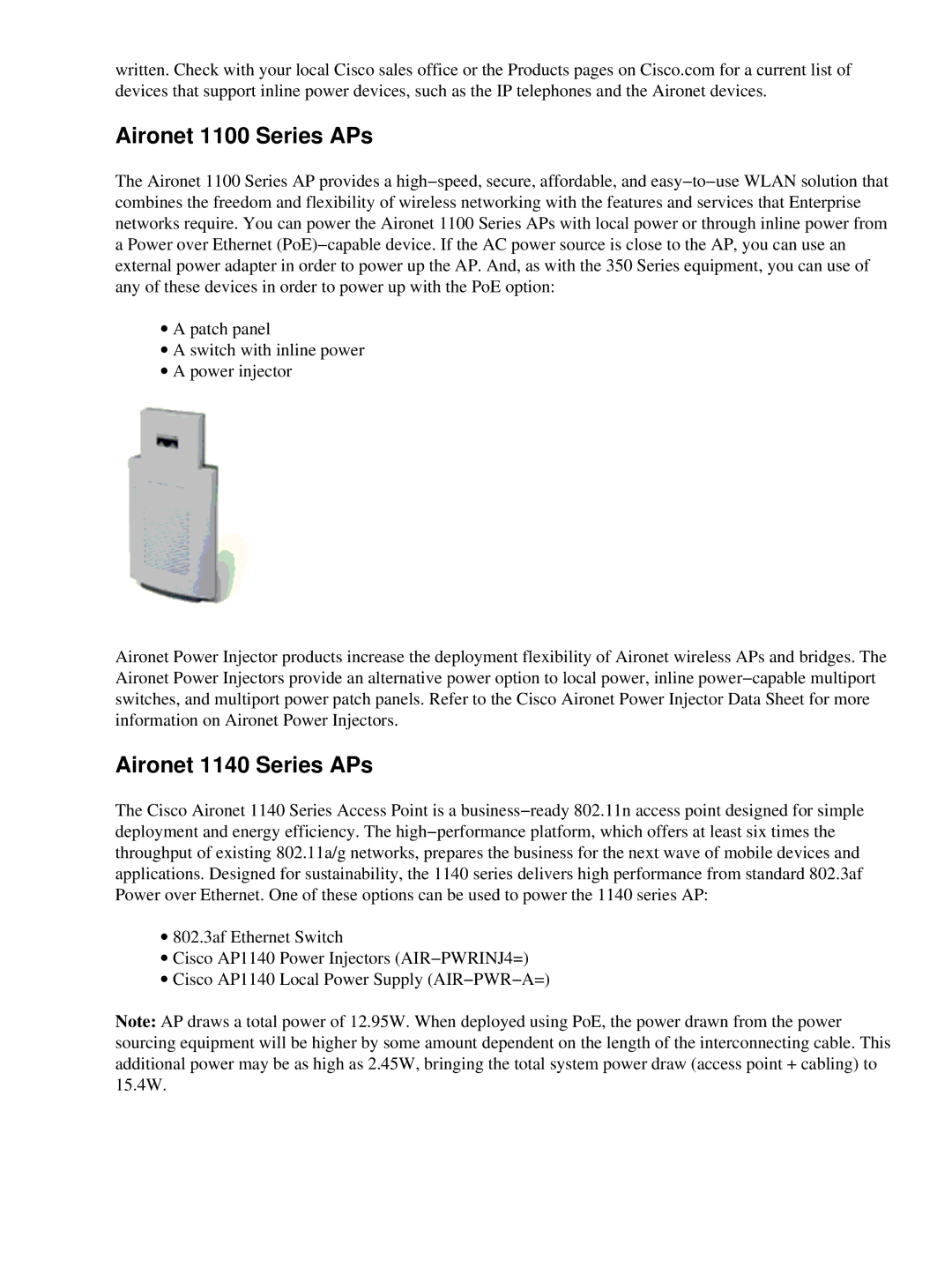
written. Check with your local Cisco sales office or the Products pages on Cisco.com for a current list of devices that support inline power devices, such as the IP telephones and the Aironet devices.
Aironet 1100 Series APs
The Aironet 1100 Series AP provides a high−speed, secure, affordable, and easy−to−use WLAN solution that combines the freedom and flexibility of wireless networking with the features and services that Enterprise networks require. You can power the Aironet 1100 Series APs with local power or through inline power from a Power over Ethernet (PoE)−capable device. If the AC power source is close to the AP, you can use an external power adapter in order to power up the AP. And, as with the 350 Series equipment, you can use of any of these devices in order to power up with the PoE option:
∙A patch panel
∙A switch with inline power
∙A power injector
Aironet Power Injector products increase the deployment flexibility of Aironet wireless APs and bridges. The Aironet Power Injectors provide an alternative power option to local power, inline power−capable multiport switches, and multiport power patch panels. Refer to the Cisco Aironet Power Injector Data Sheet for more information on Aironet Power Injectors.
Aironet 1140 Series APs
The Cisco Aironet 1140 Series Access Point is a business−ready 802.11n access point designed for simple deployment and energy efficiency. The high−performance platform, which offers at least six times the throughput of existing 802.11a/g networks, prepares the business for the next wave of mobile devices and applications. Designed for sustainability, the 1140 series delivers high performance from standard 802.3af Power over Ethernet. One of these options can be used to power the 1140 series AP:
∙802.3af Ethernet Switch
∙Cisco AP1140 Power Injectors (AIR−PWRINJ4=)
∙Cisco AP1140 Local Power Supply (AIR−PWR−A=)
Note: AP draws a total power of 12.95W. When deployed using PoE, the power drawn from the power sourcing equipment will be higher by some amount dependent on the length of the interconnecting cable. This additional power may be as high as 2.45W, bringing the total system power draw (access point + cabling) to 15.4W.
